-
Car Reviews
- Car News
-
Car Comparisons
Latest comparisons
- Chasing Deals
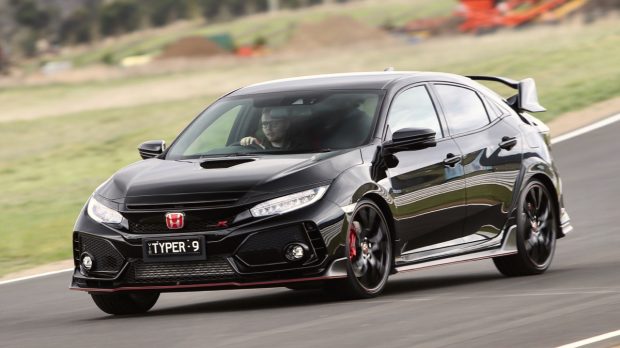
Type R. To those on the Japanese car scene, Honda’s red-badged performance arm spells serious performance, held up equally against names like STI and NISMO. Yet, here in fast car-mad Australia, Type R isn’t a name heard often. But we’ve written before about Honda’s rediscovery of its mojo after a fairly dull decade – and at the same time that Honda’s mainstream cars are getting much more interesting, the attitude to Type R is changing, too. For some time, head office has been pumping money into the development of serious cars, and Honda’s local management think the time’s right. And the first sporty salvo from this energised new Honda is this: the hugely relevant, highly anticipated 2018 Honda Civic Type R.
Making a sports car out of the Civic body is the bread and butter of the Type R boffins, and globally, this shape is the X-th generation. But it’s just the second Civic Type R we’ve received in Australia – although the most dedicated fans have found ways to source the editions we missed privately, in small numbers. In fact, Australia skipped a whole Type R generation since this car was last around in 2011. As you’d expect, the differences between old and new are as substantial as the changes in the broader hot hatch landscape over that period.
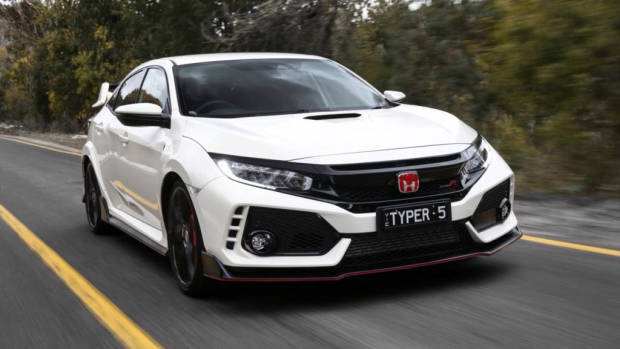
Seven years ago, a 148kW Civic Type R faced relatively rudimentary competition in the form of the 184kW Volkswagen Golf R32 and, notably, the 184kW RenaultSport Megane RS250 Cup. Fast forward to today, and the hot hatch market has splintered into distinct sub-classes of performance. The segment archetype – the 169kW Volkswagen Golf GTI – now looks like a baseline. Superhatches, including the 257kW Ford Focus RS, which is priced identically to the Type R, have grabbed plenty of attention – and then there are the hyperhatches, like the bonkers 285kW Mercedes-AMG A45.
So the Type R returns to a vastly more complex world of compact performance. With 228kW of power and 400Nm of torque, the Honda slips into superhatch territory. Its outputs are more modest than the Focus but, unlike the Ford and the 213kW Volkswagen Golf R, the Honda has retained our favoured front-wheel-drive configuration. The Civic has kept faith with the FWD tradition and with its traditional boy-racer looks, which will draw the ire of some: the rear wing is comically large. There’s a mix of other aero, too – some active, some for show. But scratch back that skin and there are very respectable fundamentals at play here.
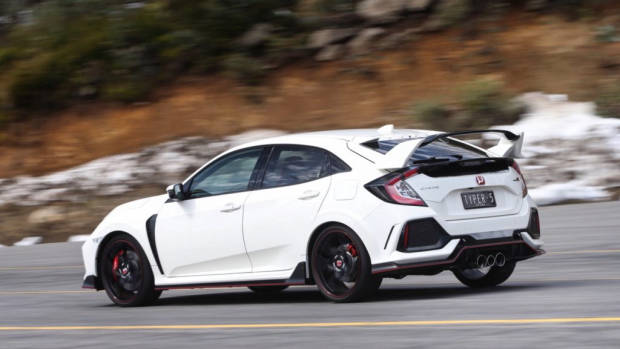
With 62% of its weight sitting over the front end, a turbocharged two-litre produces 228kW of power at 6,500rpm and 400Nm of torque between 2,500 and 4,500rpm. It’s linked only to a snicketty six-speed manual. A mechanical front-end LSD grounds the power through sticky 245/30 Continental ContiSport 6 tyres developed for the Type R. A dual-axis independent front suspension, far beefier than the standard Civic’s, presses the nose down across uneven surfaces. And if the power looks modest for a car unabashedly aimed at the Focus RS, consider that at 1,365 kilograms, the Honda is much lighter than the all-paw Ford – but the realistic limits of front-wheel-drive means the Civic claims a 5.7 second 0-100 time, a second behind Ford’s claim for the Focus.
On the road, the Civic Type R’s limits are just enormous. At first experience, the feisty Honda will exceed the abilities of most drivers: this car will make for a great long-term learning experience as you learn how far you can push it. Traversing southern Tasmania’s fast and unforgiving roads, only when entering one blind, closing-radius downhill corner did the Civic’s limits hover in front of me. I knew I’d bitten off more than I could chew but no matter: the Honda’s superb, dancer-like rear-end and sticky Continentals coped with aplomb, and the faith the standard LSD places in you to get back on the power meant this was a drama-free experience.
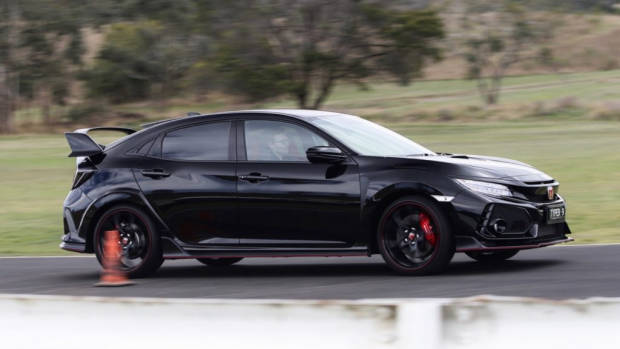
After three hundred kilometres or so of playing on public roads, I took the Civic Type R to the track at Baskerville Circuit, outside Hobart. Despite its compact-hatch origins, the Civic is best at high velocity and here, without the constraints of Australia’s restrictive speed limits, the Civic’s lofty limits are easier to find. Driving at nine-tenths, the Honda starts to deliver streams of feedback through the chassis and its firm tiller. This car feels alive and, like a dog happily barking away, on track it talks constantly: the tyres, chassis, suspension, steering wheel and engine note all feeding vital information through to the driver. Grab it by the scruff and chuck it down the back straight, and this Honda is about as happy as any hot hatch I’ve driven. It’s predictable, driveable, and just a little challenging without getting ahead of you.
That said, the Civic can’t escape the realities of its turbocharged two-litre engine. Among hot hatches the Type R is impressive but this car isn’t very Honda-like. While the engine is branded “VTEC Turbo”, power is cut at a conservative 6,800rpm, and early laps at Baskerville were characterised by bouncing off that limiter. Sitting behind a wheel emblazoned with a red H recalls memories of the cult S2000, a convertible that revved to 9,000rpm; this new Type R isn’t a car to wind out. It’s strongest at 3,500rpm, where an extra helping of torque seems to arrive, but sadly, a good noise never does. The cool-looking triple-exhaust spits out an inert, appliance-like whoosh. I predict aftermarket exhaust solutions will be popular.
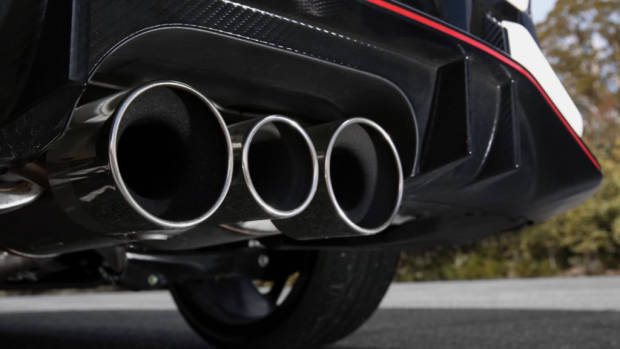
That’s the impact of the turbo, though, and it isn’t just Honda. Boosting allows these cars to meet ever-tightening emissions regulations, while adding a big serve of torque. But extracting good noise and truly quick responses from turbo mills is something high-end brands like Porsche and Mercedes-AMG are only now mastering.
Having said that, this Type R introduces plenty of new technologies for Honda that do nothing but enhance the experience. Chief among these are the standard adjustable dampers. The three suspension modes, which can be switched on the fly from a selector by the ball-like gear shifter, are very distinct. ‘Comfort’ softens the dampers and relaxes the steering to the point that the Type R would truly be a liveable daily driver – we found some bad roads around Hobart to prove the point. Sport is a decent midpoint for a spirited blast and it’s here that the steering feels most natural, but it’s in the hardest ‘+R’ mode that the Civic really settles into a great rhythm. In +R, the ride is stiff but body control is nailed down. While the +R steering setting feels artificially resistant, it doesn’t take much away from the experience.
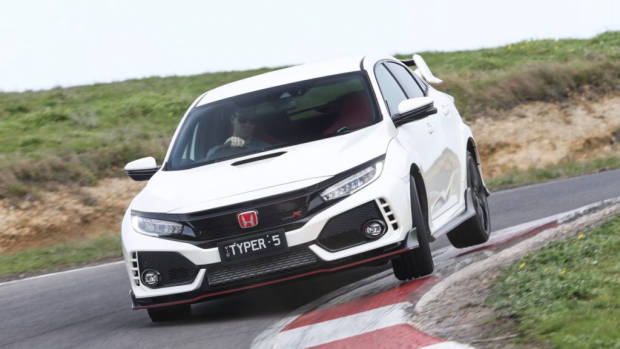
It’s in the most focussed of the Civic’s settings that we found ourselves most in touch with the new Civic. The pinned-down vertical movement limits body roll to near-zero and the front end – which you can see from the driver’s seat – darts from sweeper to sweeper with grace. Even the manual gearbox ‘wakes up’ most in +R – by which I mean the automatic rev-matching function (which can be turned off through the touchscreen) is most forceful. Though the most macho drivers will hate the idea of driveline computers calculating the best downshifts – eliminating the need to heel-toe – we were comfortable to leave the technology engaged. Taking the guesswork and unnecessary difficulty out of the manual makes it easier to drive very fast more of the time and may help to keep the stick-shift around for longer. An automatic Type R? It’s not on the agenda.
Having parked up to grab the caffeine you need to stay on top of this little monster, It’s impossible to gloss over the busy visual treatment of the new Type R’s exterior. We feel it’s a love-it-or-hate-it car, with tens of different crease lines cluttering a fundamentally attractive shape. The inclusion of some faux carbon fibre down low is chintzy and the boy-racer rear wing will mean you attract more looks from the local constabulary than you will from the objects of your affection, who are more likely to roll their eyes. Aren’t you too old for a spoiler like that? Championship White might be the Type R’s signature colour, but we’d choose Crystal Black, which looks classier simply because you see less of the bodywork detail.
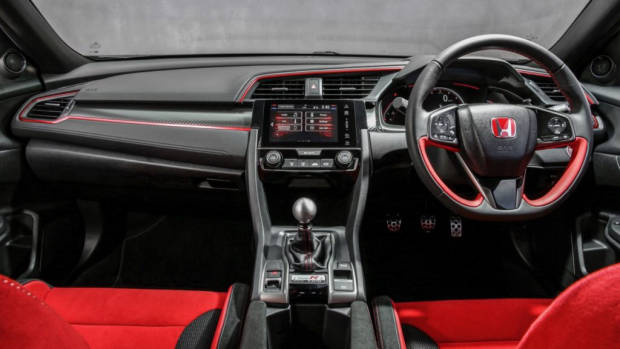
Jump back into the Type R, and you return to relative normalcy. Aside from red trim highlights on the Recaro buckets, and on the dash and steering wheel – the red/black two-tone is the only colour scheme offered – the cabin closely mirrors that of the standard Civic hatch. That’s a good thing: Honda’s latest small car has a high-quality cabin with an attractive, logical dashboard. Most functions are found in the slate-like, seven-inch touchscreen. Honda’s own software remains below-par but the inclusion of Apple CarPlay and Android Auto alleviate that problem. But you’ll need plenty of data for your phone, though, because satellite navigation – standard on the $33,590 Civic VTi-LX – disappears here despite the additional $17,400 outlay. The digital instrument cluster looks good, but it can’t compete with the driver’s screen on the new Golf R for functionality. The Volkswagen can place a map of the road ahead in front of you, which is great for assessing upcoming corners.
The standard Civic is well-built but fit and finish on the Type R feels even better – perhaps because this sporty version is built in Honda’s Sunderland, UK plant; other Civics that come to Australia are sourced from Thailand. Most materials are soft-touch and shut lines are good. Comfort levels are surprisingly high, too. Recaro bucket seats are standard; they will likely be too narrow for more heavier-set drivers, so make sure to test drive the car, but if you fit in them they keep your torso and legs well-supported all day. We jumped out feeling fresh (save for an aching neck, but that’s the product of the tremendous cornering forces this thing sustains). Visbility from up front is fine because that wing is so tall it actually sits above the rear glass.
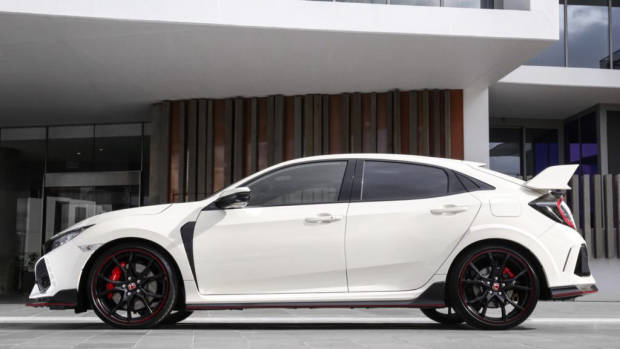
Despite the bulky seats up front, the Civic Type R is fairly practical for ferrying exfra passengers in the back. The comfortable rear seat from the Civic hatch is reprised here; two adults will fit, a third at a pinch. Legroom and headroom are both generous enough. You’ll have a shot at fitting everybody’s luggage, too – underneath the heavy-ish hatchback there is a 414-litre cargo capacity – bigger than the Golf’s 380 litre boot – and those back seats fold down, too.
As an ownership proposition, the Civic Type R isn’t too bad. Service intervals of 10,000 kilometres or an (optimistic) year will frustrate those that want to drive the Civic as a daily, but weekend warriors will find the window suitable. Each of those services through to 100,000km will cost $307 – not bad for a high performance car. Fuel economy is quoted at 8.8L/100km on the combined cycle; on our long-distance road loop, we only achieved 12.5L/100km, so take that with a grain of salt – and the Type R requires 95 RON premium petrol. Fair enough.
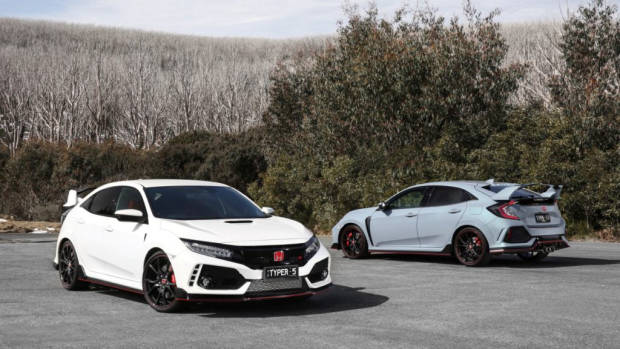
We’re chuffed to see the return of the Type R to the Australian hot hatch scene. Many of the cars that offer performance in the league above 200kW have handed in their front-wheel-drive cars in favour of heavier all-paw drivelines. Admittedly, AWD helps a car like this put that power down more successfully, but it comes at the cost of some of the laughs that convinced you to buy a hot hatch in the first place. There are whispers that Honda may make the same choice for the hot Civic in future, but for now, the Type R harks like a fairly pure reminder of fast, FWD hatches of days gone by – setting aside the fact that the (very capable) turbo two-litre feels quite foreign sitting in a badge better-known for the shrieking naturally-aspirated mills mostly consigned to the history books.
For a reasonably attainable price, the Type R lets you get behind the wheel of a seriously capable performance car with a front end that’s more tenacious than almost anything we’ve driven this year. With good power on tap, strong brakes, quick steering and good levels of driver feedback, the Civic quickly establishes itself as a “fun car”, and one that offers depths of ability for a driver that wants to really test the Honda’s high limits. And the stunningly-calibrated adaptive dampers mean you can actually drive it every day – something we wouldn’t actually want to do with the hard-riding new Golf R. The Honda is more liveable than a Golf: that’s a shocker, and a testament to the engineering detail that has gone into this interesting, racy little machine. Hello again Type R – and a big welcome back to Honda, who we can now say with certainty has rediscovered its mojo.
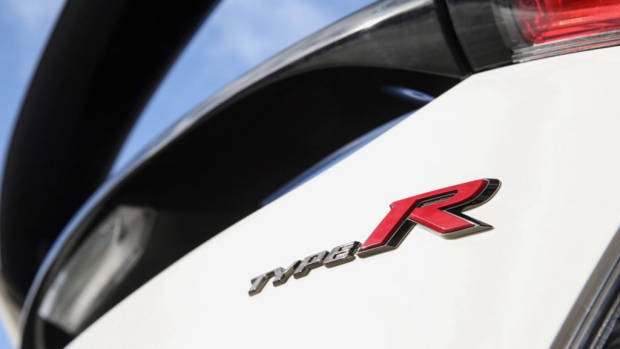
Key specs (as tested)
About Chasing cars
Chasing Cars reviews are 100% independent.
Because we are powered by Budget Direct Insurance, we don’t receive advertising or sales revenue from car manufacturers.
We’re truly independent – giving you Australia’s best car reviews.
The estimate provided does not take into account your personal circumstances but is intended to give a general indication of the cost of insurance, in order to obtain a complete quote, please visit www.budgetdirect.com.au. Estimate includes 15%^ online discount.
^Conditions Apply
Budget Direct Insurance arranged by Auto & General Services Pty Ltd ACN 003 617 909(AGS) AFSL 241 411, for and on behalf of the insurer, Auto & General Insurance Company Limited(ABN 42 111 586 353, AFSL 285 571).Because we don’t know your financial needs, we can’t advise you if this insurance will suit you. You should consider your needs and the Product Disclosure Statement before making a decision to buy insurance. Terms and conditions apply.
Indicative quote based on assumptions including postcode , 40 year old male with no offences, licence suspensions or claims in the last 5 years, a NCD Rating 1 and no younger drivers listed. White car, driven up to 10,000kms a year, unfinanced, with no modifications, factory options and/or non-standard accessories, private use only and garaged at night.
^Online Discounts Terms & Conditions
1. Discounts apply to the premium paid for a new Budget Direct Gold Comprehensive Car Insurance, Third Party Property Only or Third Party Property, Fire & Theft Insurance policy initiated online on or after 29 March 2017. Discounts do not apply to optional Roadside Assistance.
2. Discounts do not apply to any renewal offer of insurance.
3. Discounts only apply to the insurance portion of the premium. Discounts are applied before government charges, taxes, levies and fees, including instalment processing fees (as applicable). The full extent of discounts may therefore be impacted.
4. We reserve the right to change the offer without notice.